Industries of nearly every kind benefit from asset tracking because it prevents theft, loss and damage. Since assets comprise such a large percentage of a company’s holdings, asset management is essential for meeting compliance and industry standards or regulations. Asset tracking that delivers real-time data contributes to a healthy bottom line. Internet of Things (IoT)-enabled devices and systems make asset tracking more accurate and reliable than ever before..An IoT-based asset management system represents a transformative approach to tracking, monitoring, and optimizing assets across various industries.

Leveraging the Internet of Things (IoT), this system integrates sensors, connectivity, and data analytics to provide real-time visibility into the location, condition, and utilization of assets. By deploying IoT devices equipped with sensors, assets can transmit valuable data such as location, temperature, humidity, and performance metrics to a centralized platform. This enables stakeholders to remotely monitor asset health, track movement, and proactively address maintenance needs. With actionable insights derived from IoT-generated data, organizations can enhance operational efficiency, reduce downtime, minimize losses, and ultimately improve the overall management of their assets. In an increasingly interconnected world, IoT-based asset management systems offer a powerful solution to optimize resource allocation, enhance decision-making, and drive business growth.
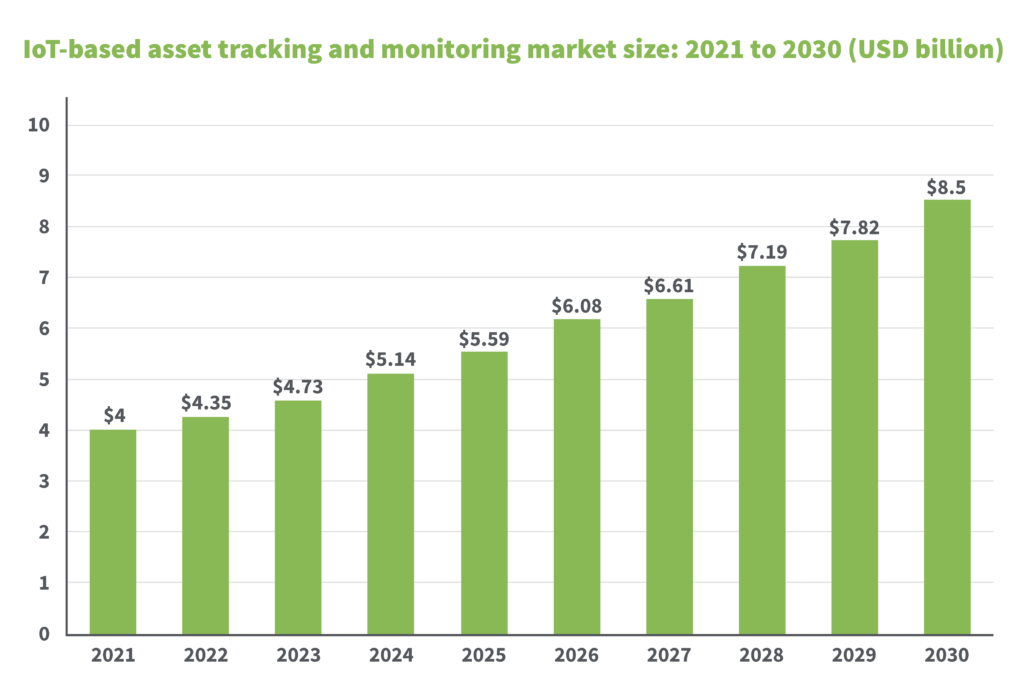
1.Remote assets tracking
Remote asset tracking involves using technology to monitor and manage assets, such as vehicles, equipment, or inventory, from a distant location. This is typically achieved through the use of GPS, RFID, or other tracking technologies.
Onsite maintenance costs you time, money and resources, so you’re keen to avoid being on-prem whenever possible. The key to staying offsite is to monitor your assets remotely. You can do this with Industrial IoT remote asset monitoring solutions that supplant your legacy maintenance schedules of physically-present inspections, resulting in a much lower OpEx for tracking, preventing and preempting connectivity problems.
Data-Informed Insights
Failure of critical assets means frustrated customers, delayed operations and financial loss. In order to preempt and/or deal with downtimes, asset monitoring is key. But beyond that, the value of remote monitoring lies in the fact that the data gleaned from remote device monitoring can be leveraged for KPI reporting capabilities, enabling informed business decisions by executives based on smart asset tracking and smart metering.
Therefore, industries are replacing their former maintenance schedules and visual inspections with new, wireless, cloud-based technologies for remote end-to-end site monitoring, including predictive/preventative maintenance.
Here’s a sample topology design for an IIoT end-to-end solution for wireless asset monitoring centered around the RAD SecFlow Gateway:
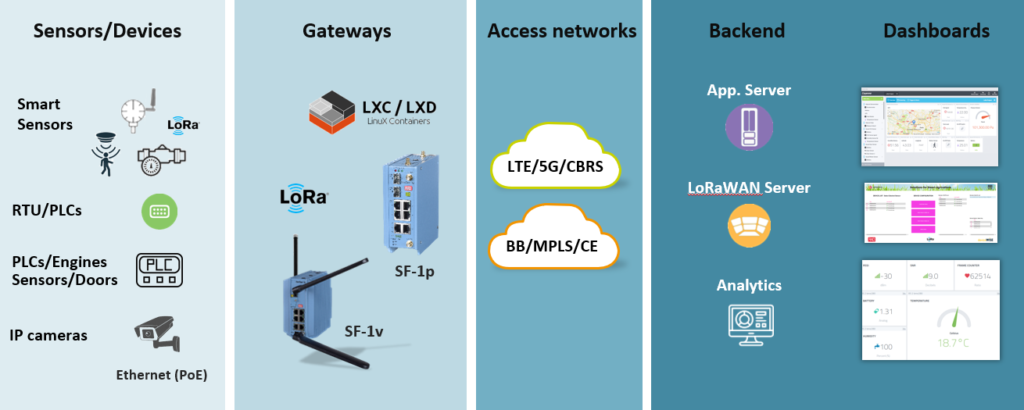
The Optimal Remote Asset Monitoring Solution (RAMS)
Due to the challenges for remote asset monitoring, organizations are looking to IIoT with edge computing as the solution. The ideal RAMS allows for ultimate flexibility of integration – one that moves away from a cumbersome, multi-domain, disaggregated fragmented monitoring to unified, aggregated end-to-end wireless monitoring, over cellular or fiber networks, public or private, be they 4G, 5G, PLTE, 450MHz (450 LTE) CBRS, LPWA (low power wide area) or other network options for intelligent monitoring.
Edge Computing
Edge Computing allows for local data processing by sensor-rich assets, rather than via a centralized control center. This saves equipment costs and space and enables future functionality flexibility. Other Edge Computing benefits include ultra-low latency, quick action on detected anomalies, lower mobile data costs, predictive maintenance based on smart data collection, and reduced cyber security needs due to a lower number of components.
2.Assets health and condition monitoring
An open/integrated system utilizing components with short lifecycles requires reliable security measures. In order to maintain stable and continuous operation, a proper understanding of the system’s overall health is essential. An IoT-based asset management system for health and condition monitoring in healthcare facilities can revolutionize the way medical equipment and devices are tracked and maintained.It provides a real-time view of asset health and condition status, delivers early warning of potential failures, and highlights elevated risk areas.
In healthcare facilities, medical equipment plays a vital role in patient care. From MRI machines to infusion pumps, ensuring the reliability and availability of medical devices is paramount. IoT-based asset monitoring systems can track the condition of medical equipment, alerting staff to potential issues before they escalate and ensuring that life-saving devices are always ready for use.
Features
- Monitor: Reduce unplanned downtime and increase availability and reliability by helping to ensure critical assets and systems are monitored and protected from emerging threats.
- Optimize productivity: Improve workforce productivity by prioritizing maintenance based on criticality and cost (condition-based), rather than schedule-based maintenance practices.
- Manage risk :Protect the health and safety of employees, the environment, and business objectives, by reducing asset-related incidents and unplanned downtime.
- Predictive maintenance: Reduce costly emergency repairs by detecting problems early, turning unplanned downtime into planned/scheduled downtime.
- Lower total cost of ownership (TCO): Reduce TCO delivered via a Software-as-a-Service (SaaS) model, providing flexibility and access to business insights where it matters—with edge, cloud, and hybrid configurations.
- Faster time-to-value: A standardized way to connect machines, data, and people with a consistent interface for superior user experience, dynamic scalability, and extendibility to grow functionality as business needs evolve.
Techniques used:
- Vibration analysis: Measures vibration levels in equipment to detect anomalies that might indicate bearing wear, misalignment, or other issues.
- Thermography: Uses thermal imaging cameras to detect temperature variations that can indicate overheating, impending component failure, or insulation problems.
- Oil analysis: Analyzes lubricant samples for signs of wear debris, contamination, or changes in viscosity, indicating potential problems within the machinery.
- Ultrasonic testing: Uses high-frequency sound waves to detect cracks, voids, or other defects in materials.
- Acoustic emission (AE) monitoring: Detects and analyzes sound waves emitted by machinery due to stress, cracks, or leaks, helping identify potential failures.
- Data analytics: Advanced analytics tools are used to analyze sensor data from various sources, identify trends, and predict potential issues.
AMS ASSET MONITOR – PUMP ASSET HEALTH
Pumps are essential to the daily operation of industrial processes, but they begin to degrade the day they start up. It is estimated that pumps account for 7% of the total maintenance cost of a plant or refinery, and pump failures are responsible for 0.2% of lost production.1 These might seem like small numbers until you consider
that in the roughly 150 large U.S. refineries, more than $500 million is invested in pumps.2 Pumps are, without question, significant players for maintaining production schedules. The AMS Asset Monitor is an edge analytics device that delivers the benefits of continuous monitoring to more plant assets and far less installation expense.
The AMS Asset Monitor is an edge analytics device that delivers the benefits of continuous monitoring to more plant assets and far less installation expense. QUICK, EASY DEPLOYMENT AND USE
-Small footprint size that is easy to mount.
-Field-located close to the pump for easy and lower-cost wiring.
– Predefined asset templates eliminate costly engineering.
– Easy DIY configuration.
– Built-in web service software interface replaces software, server, and licensing.
– Access asset health with any browser-enabled device from anywhere.
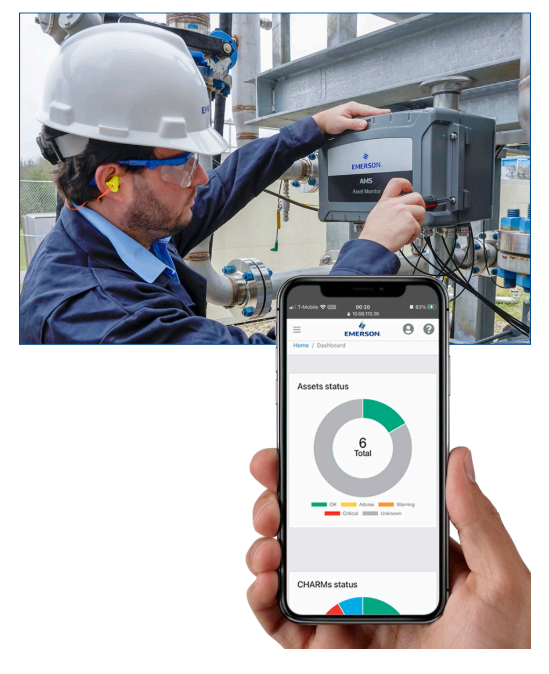
3.Assets Lifestyle management
Asset lifecycle management encompasses the entire lifespan of an asset, from acquisition to disposal. It involves various stages, including procurement, maintenance, utilization, and retirement. Effectively managing assets throughout their lifecycle is crucial for maximizing their value, minimizing downtime, and ensuring compliance with regulations and standards.
Leveraging IoT for Asset Lifestyle Management
IoT technology offers a plethora of capabilities that can transform asset lifecycle management:
1. Real-time Monitoring:
IoT sensors embedded in assets can continuously monitor key parameters such as usage, performance, and environmental conditions. This real-time data enables proactive maintenance, allowing organizations to address issues before they escalate and optimize asset utilization.
2. Predictive Maintenance:
By analyzing data collected from IoT sensors, organizations can predict when equipment is likely to fail and schedule maintenance proactively. Predictive maintenance reduces downtime, extends asset lifespan, and lowers maintenance costs.
3. Asset Tracking and Optimization:
IoT-enabled asset tracking systems provide real-time visibility into the location and status of assets. This enables organizations to optimize asset allocation, improve workflow efficiency, and prevent loss or theft.
4. Remote Diagnostics and Troubleshooting:
IoT technology allows for remote diagnostics and troubleshooting of assets, reducing the need for onsite inspections and service calls. Technicians can remotely access asset data, diagnose problems, and even perform repairs or adjustments remotely, saving time and resources.
5. Performance Analytics:
IoT platforms can analyze historical asset data to identify trends, patterns, and anomalies. This data-driven insight helps organizations make informed decisions about asset maintenance, upgrades, and replacements, optimizing asset lifecycle management strategies.IoT allows asset managers to track their portfolio assets throughout their lifecycle, maximizing profitability.
Internet of Things (IoT)-enabled devices and systems make asset tracking more accurate and reliable than ever before
IoT Smart Asset Monitor Demonstration Application
This application demonstrates the implementation of an IoT sensor node for RFID-based temperature sensing and monitoring on the Google Cloud Platform. For example, passive RFID temperature sensors can be used to monitor agricultural produce that is being transported by truck and generate an alarm if an asset gets too close to an unacceptable temperature level.
In this reference solution, a MikroElektronika RFid click board reads the RFID tag data to generate the Object ID, and an IrThermo 2 click board, a non-contact temperature measurement device, reads the object’s surface temperature. Data is sent to the Google Cloud Platform via the MQTT protocol.
Design Benefits:
- Quick start from concept to prototype
- Modular design that is easily expandable and reusable for multiple applications
- All-in-one edge node sensor solution that securely connects to Google IoT Cloud
This application addresses the three key requirements of any IoT application:
- Smart: a PIC32CM MC00 microcontroller is used to implement the application logic
- Secure: an ATECC608B secure element provides a full range of security features
- Connectivity: an ATWINC1510 IEEE® 802.11 b/g/n IoT network controller enables Wi-Fi® connectivity
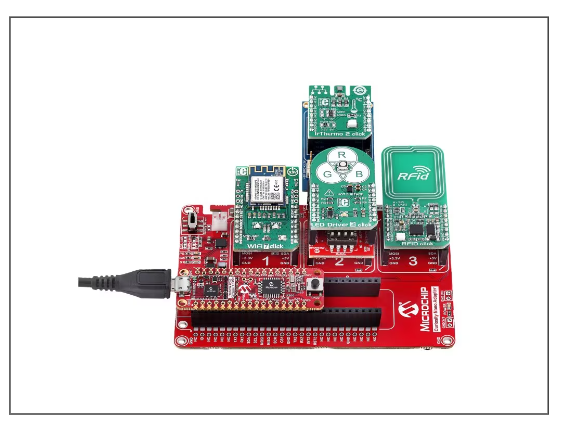
DESIGN BLOCK DIAGRAM:

4.Assets workflow management
IoT-driven solutions automate repetitive tasks and speed up workflows. This reduces errors and increases team productivity.
From identifying the requirement and continuing to its execution steps, IoT asset management can process it all. It starts with dashboard management where every detail related to the asset is viewed. Automated notifications are sent to support centers to assist in case of an emergency. If there’s some problem with the asset’s condition, it automatically triggers an alarm that informs the plant manager about the issue in the functioning along with the root cause, thereby saving the plant manager’s time in finding the problem.
IoT based asset lifecycle management is a digital version of a human asset manager. It manages the dashboard, notifies the engineer about the system malfunction, reaches out to the support center for help, checks inventory and orders the spares that are out of stock, sets a reminder for maintenance, and all the other operations required to manage the asset; without any break or error.
Workflow automation
Using workflow automation in IoT asset management can help businesses to complete the work and trigger events to proceed to the next step. For example, whenever equipment is out of stock, a human worker, say, the manager would be involved to view the details of the inventory and then send a purchase request. Or you can automate the procurement and dispatch process so that managers don’t need to intervene and the workflow can be completed automatically with fewer errors and delays. The application of workflow automation can be tailored for each industry. Heavy machinery can use workflow automation to carry out their functioning, HR workflow automation to accept the applicant, send emails, etc.
These are just a few of the examples of use cases for IoT asset management solutions. Due to size and price, the applications of IoT for asset management are limited to tracking and automation for heavy machinery. However, the industries have a huge demand and with automation and digital revolutions in the coming years, the asset management for IoT will have a wide spectrum of applications used by large and small scale industries.
Implementing IoT-based Asset Lifestyle Management
To harness the full potential of IoT for asset lifecycle management, organizations should consider the following steps:
- Assess Needs and Goals: Identify the specific assets to be monitored and define the goals and objectives of the IoT implementation, such as improving asset reliability, reducing maintenance costs, or enhancing operational efficiency.
- Select Appropriate Sensors and Devices: Choose IoT sensors and devices that are suitable for the assets being monitored and the environment in which they operate. Consider factors such as durability, connectivity options, and power requirements.
- Integrate with Existing Systems: Ensure seamless integration of IoT solutions with existing asset management systems, enterprise resource planning (ERP) software, and other relevant platforms to facilitate data exchange and workflow automation.
- Establish Data Security Measures: Implement robust cybersecurity measures to protect sensitive asset data from unauthorized access, breaches, and cyber threats. This includes encryption, access controls, and regular security audits.
- Train Personnel: Provide training to employees on how to use and interpret data from IoT-enabled asset monitoring systems. Encourage collaboration between maintenance teams, IT departments, and other stakeholders to maximize the benefits of IoT technology.
5.Predictive assets maintenance
This involves using IoT data to predict when assets will fail. It allows organizations to take preventive measures to reduce shutdowns and downtime. The system often uses cached data from previous asset performance assessments to optimize predictive maintenance schedules.
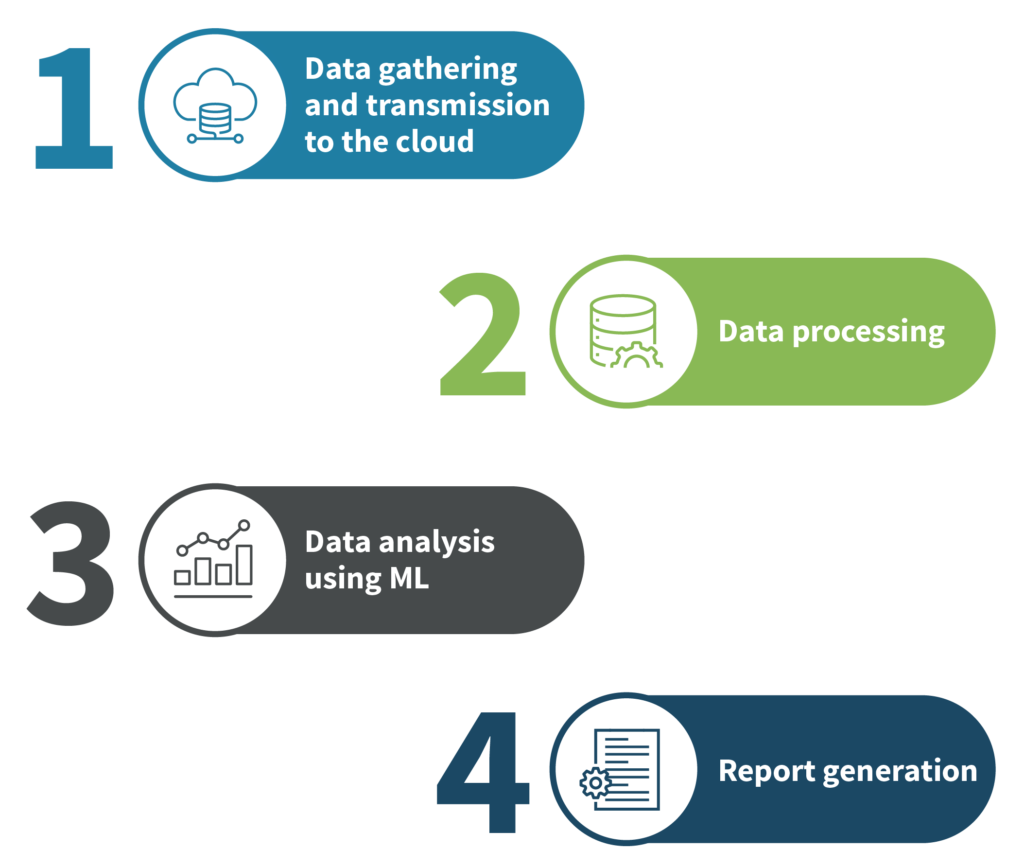
From reducing equipment maintenance costs and enhancing asset utilization to extending machine life and optimizing field crew efficiency — IoT-based predictive maintenance offers a range of benefits. Given the digital day and age we live in, it is hard to deny that the Internet of Things (IoT) has no role to play in the manufacturing domain. In this article, we will look at how IoT-based predictive maintenance is making waves for manufacturers.
The technology has already been in use to a great extent in many manufacturing initiatives for developing smarter factories of the future. Sweden-based engineering company Sandvik, for instance, teamed up with Microsoft for creating sensorized cutting equipment.
The technology combines streaming analytics, data collection, and machine learning algorithms to notify engineers when the tool bit maintenance is required or to offer an alert of impending failure. On the other hand, ABB, an engineering multinational specializing in robotics, has developed a predictive maintenance system for driving applications in manufacturing.
In this scenario, cloud computing, machine learning algorithms, and sensors combine to offer an overview of equipment performance for keeping the production running as planned. This has been beneficial for the Italian steel pipe manufacturer, Tenaris.
It uses predictive maintenance to track high and low-voltage motors operating critical fans and pumps 24/7. The system has been used for collecting and analyzing vibrations to highlight failure and any anomalies in power or voltage that indicate a short circuit.
1. Identify assets that need predictive maintenance
Before you start deploying the technology in your manufacturing unit, you must know that not all machines will need predictive maintenance. To identify which ones would need it, think about the impact of minimal downtime of specific equipment on your bottom line.
Sort the identified assets based on their past downtime incidents and the business loss they can lead to. That way, you will know which ones to pick up on priority for predictive maintenance.
2. Choose the right software
With hundreds of systems available in the market, searching for the right predictive maintenance platform can be a bit challenging. You have to find the perfect fit because it is a costly investment, unlike purchasing clothes off the rack!
Speak to various vendors to get clarity about how their products can help. Schedule a demo or two. Ask if you can try a few features of their IoT-based predictive maintenance system for a defined timeline. While doing your research, check out user reviews about the IoT development company to get an idea of how their experience was.

Conclusion
IoT is the future of businesses. And it is no surprise that asset-intensive industries would benefit the most from smart asset management solutions, provided asset owners, plant managers can easily monitor the data in real-time from their mobile devices. Industries that stick with the traditional asset management solutions will have to move towards digital solutions in a few upcoming years or might have to face the challenges of the traditional methods, competitors, eventually adopting the IoT asset management solution forcibly. If you’re one of the asset-intensive industries and are looking for an IoT asset management solution, then go and get your solution developed today. It will be rewarding in the long run.


